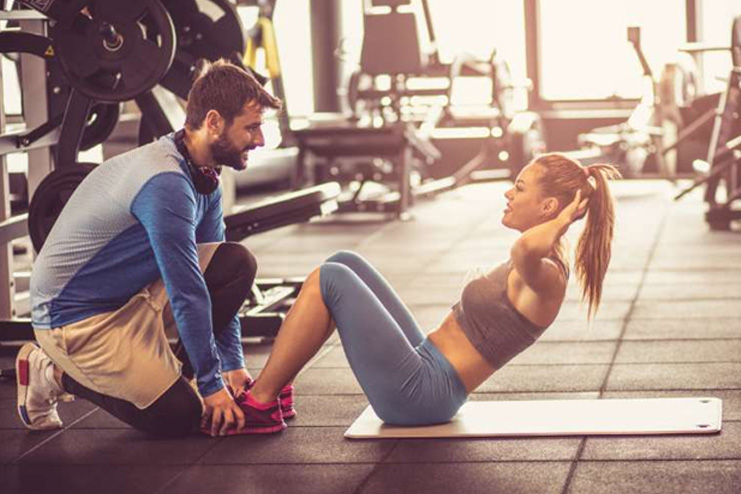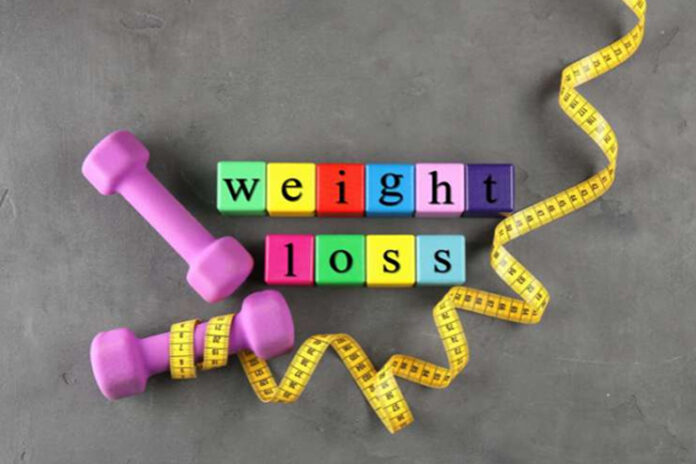Affiliate Disclaimer
Some links in this article are affiliate links. We may earn a small commission if you make a purchase through these links, at no extra cost to you. We only recommend products we find useful to our readersSeveral variants of sit-ups will help you lose weight and keep your exercise routine fresh. When performed correctly, sit-ups are not only a great way to develop your abdominal muscles, but they can also help you lose weight. The core, a vital muscular region that acts as your body’s powerhouse, is the focus of sit-ups. A strong core is functional as well as very aesthetically pleasing. It helps with balance, posture, and—above all—metabolism. The reason is that a more robust core improves your body’s capacity to burn fat effectively even when you’re not exercising.
Adding sit-ups to your program can start a chain reaction. The effort strengthens your abdominal muscles, which promotes improved nutrient absorption and digestion. Additionally, a strengthened core results in improved performance in other physical activities, eventually raising calorie burn.
1. Benefits of Sit-Ups for Weight Loss

Sit-ups are essential for a toned midsection, but they can also revolutionize your weight loss efforts. Sit-ups provide a complete weight-loss strategy. They increase metabolism, enhance general fitness, and lower body fat percentage by working several muscle groups. As a result of this enhanced muscular activity, higher calorie expenditure occurs during and after exercise. A stronger core results from this all-encompassing involvement, and it is necessary for improved calorie burning and general stability.
A strong core enhances your body’s biomechanics, making it easier to execute simple and intricate workouts. Because of this efficiency, your body burns more calories even when you’re at rest, resulting in a higher metabolic rate.
Regular sit-ups help you develop good posture; better alignment can significantly impact your weight loss attempts. Your muscles function better, and you run a lower risk of injury when your posture is correct, which makes it easier to maintain your workout regimen.
2. Beginner Sit-Up Variations

Beginning your fitness adventure with sit-ups can be scary, but learning the fundamentals guarantees a secure and efficient route to a stronger core. Let’s look at beginner-friendly versions that reduce the chance of damage while providing good results.
Basic Sit-Up: Although the traditional sit-up appears straightforward, its advantages depend on using it correctly. Start lying on your back with feet flat on the floor and your knees bent. Avoid the urge to tug on your neck by placing your hands softly behind your head. As you raise your torso toward your knees and gradually lower it back down, contract your core. Pay more attention to deliberate motions than speed.
Tuck-Up: To perform a tuck-up, place arms by your sides and extend your legs in front of you while lying face-up on the floor. Pull your body off the floor and pull your knees into your chest simultaneously using your abs and hip flexor muscles.
Heel Taps: Your best bet is heel taps. While lying on your back, make a 90-degree angle with your feet up and knees bent. Alternate legs as you slowly descend one heel toward the floor and raise it back up. This exercise provides a regulated introduction to core strengthening while targeting the lower abs and enhancing stability and coordination.
Straight-Leg Sit-Up: Try doing sit-ups as usual, but instead of bending the knees, extend your legs straight out in front of you. It will help you develop a very strong core. To increase core strength, you must lessen your reliance on your hip flexors and use more abdominal muscle fibers during this sit-up version.
3. Intermediate Sit-Up Variations for Fat Burn

After mastering the fundamentals, it’s time to advance to more challenging sit-up variations that increase the intensity and potential for fat burning. These intense exercises help you lose those unwanted pounds more successfully by strengthening your core and raising your heart rate.
Bicycle Sit-Ups:
- Consider bicycle sit-ups as a cardio variation on a core exercise.
- Start by raising your legs off the floor and lying on your back with your hands behind your head.
- Extend your right leg and bring the right elbow to your left knee to simulate pedaling.
- Switch sides with a steady, rhythmic tempo.
The twisting and continuous leg movement work your cores, obliques, and even your hip flexors, transforming your core exercise into a mini-cardio session.
V-Ups: An advanced exercise that builds on the tuck-up is the V-up, also known as the V-sit. First, lie flat with your legs straight and your arms outstretched overhead. Lift your legs and upper body at same time, trying to make a “V” shape with your hands touching your toes. Controllably lower yourself back down. This workout uses a single, fluid motion to target both your upper and your lower abdominal muscles.
Russian Twists: To activate your core, sit on the floor with your knees bent, feet slightly up, and lean back a little. Tap the ground on either side as you twist your torso from side to side while holding weight or just clasping your hands together. The circular movement tests your balance and targets your upper body.
4. Advanced Sit-Up Variations for Maximum Fat Burn

Advanced sit-up variants are the key to a powerful core workout that will tone your abs and increase your calorie burn. Your fitness gains will soar because of the resistance, instability, and explosive power these motions provide.
Weighted Sit-Ups: A variant of the classic sit-up is the weighted sit-up. As the name implies, this workout entails doing a sit-up while holding a weight. Place a dumbbell or weight plate against your chest or hold it above your head for added difficulty. The additional resistance makes your core work harder during each sit-up, which increases muscle growth and metabolism. Even while resting, you burn more calories as you gain muscle.
Decline Sit-Ups: Use a decline bench to make sit-ups more difficult. Curling your torso up is more difficult due to gravity’s pull. Use a decline bench with a brace that allows you to hook your feet or wrap your legs to be stable. As you perform sit-ups as usual, notice how the higher angle constantly strains your core. The increased resistance works your entire abdominal area.
Medicine Ball Sit-Ups with Throw:
- Sit next to a strong wall or on the floor with a partner.
- Hold a medicine ball near your chest and toss it to your partner or forward as you do a sit-up.
- As you fall again, catch it and repeat.
This kind of vigorous workout raises your heart rate while strengthening your core.
5. Incorporating Sit-Ups into a Weight Loss Routine

Sit-ups become an even more potent fat-burning exercise when paired with cardio or high-intensity interval training (HIIT). By combining sit-ups with bursts of extreme activity, such as burpees, jumping jacks, or running, you can increase your calorie burn and maintain an elevated metabolism long after your workout. In addition to helping you lose your stubborn fat, this strength and cardio combination enables you to gain lean muscle and develop a more defined body.
The critical factor is consistency. Try to include sit-ups in your program three to four days a week, gradually increasing the number of reps or level of difficulty. Regularity guarantees long-lasting results, whether you’re doing them as part of a structured circuit or as a quick 10-minute core finisher after your cardio. Establish realistic goals, such as reaching a specific number of sit-ups or gradually becoming skilled in more complex versions. This will keep you motivated and add interest and sustainability to your weight loss journey.
Common Mistakes to Avoid
Sit-ups are ordinary in workout routines, but performing them incorrectly might have more detrimental repercussions than beneficial ones. Pulling on the neck for speed is one of the most frequent errors. It raises your risk of neck pain or injury by decreasing core activation and placing needless strain on your cervical spine. Instead, concentrate on engaging your core to increase your body while keeping your hands loosely crossed over your chest or behind your head.
Rushing through the movement is another common mistake. Although quick, uncontrolled sit-ups may seem like a fast way to get fit, they frequently result in poor form and lower back discomfort. Deliberate, slow motion is crucial. Throughout the workout, control your descent and use your core muscles. It lowers the chance of damage while simultaneously optimizing muscle activation.
Conclusion
Including a range of sit-up exercises in your program will help you develop a stronger, more defined core and dramatically increase fat burning. Every variety, from easy crunches to more difficult weighted sit-ups, has unique advantages that make your workouts exciting and productive. The secret is to go slowly; begin with the fundamentals, perfect your form, and then add more challenging variations as your strength increases. Your hidden weapon is consistency. You will quickly see a difference in your core strength and fat reduction when you include sit-ups in your training regimen.
References
- https://www.healthshots.com/fitness/weight-loss/sit-up-variations-for-weight-loss
- https://www.verywellfit.com/can-i-reduce-belly-fat-with-sit-ups-3495613
- https://www.menshealth.com/uk/how-tos/a735506/sit-up
- https://breakingmuscle.com/sit-up
- https://health.clevelandclinic.org/can-sit-ups-reduce-abdominal-fat
- https://www.livestrong.com/slideshow/1011363-21-situp-variations-wont-totally-hate
- https://www.verywellfit.com/how-to-do-sit-ups-techniques-benefits-variations-5075764
- https://www.boxrox.com/how-to-build-abs-with-the-weighted-sit-up
- https://www.healthline.com/health/fitness-exercise/sit-ups-vs-crunches#crunches
- https://www.livestrong.com/article/352108-how-many-sit-ups-should-you-do-a-day-to-lose-weight
- https://www.fitday.com/fitness-articles/fitness/exercises/why-sit-ups-wont-help-you-lose-weight.html
- https://www.healthline.com/health/sit-ups-benefits
- https://www.spineckpt.com/6-Mistakes-to-Avoid-while-doing-Abdominal-Crunches.html
- https://spiralspine.com/abdominal-crunch-mistakes
- https://www.hevyapp.com/exercises/sit-ups
- https://www.fitwirr.com/workout/sit-ups
In this Article




















